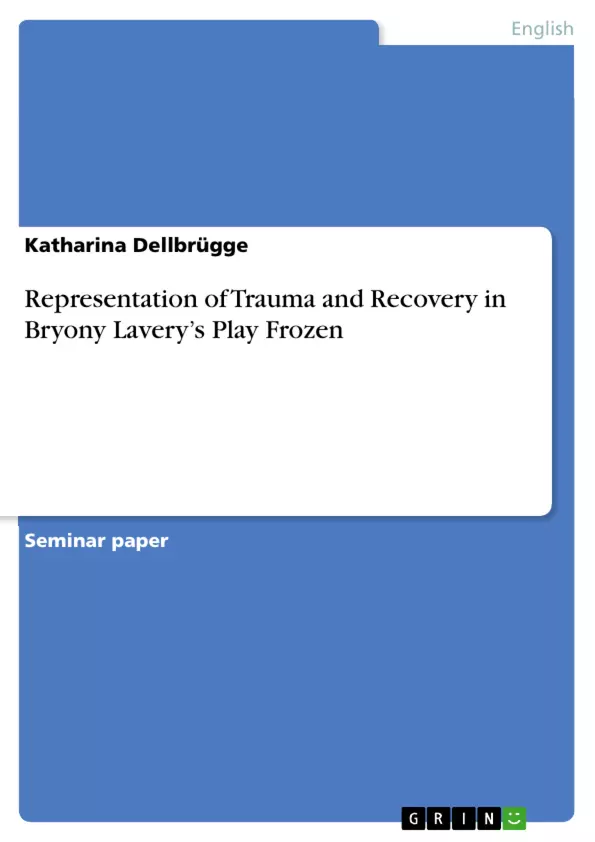Bryony Lavery’s play Frozen consists of two acts and 30 scenes and was first performed by the Birmingham Repertory Theatre in 1998. The three main characters of the play are Agnetha, an American psychologist, Nancy, a mother whose ten-year-old daughter Rhona gets abused and killed, and Ralph, a sexual serial killer who also murdered Rhona. All three of them can be regarded as traumatised characters and in the beginning of the play they are, literally, frozen. However, Lavery allows each of them to take a journey towards a melting of their frozen states.
The term paper investigates how the concept of trauma is represented in the play, which in this case implies a focus on the illustration of the characters’ frozen states and their “melting”. Therefore I will first provide an overview of the concept of trauma and will place Frozen into the context of “Trauma Drama”, before I move on to a close reading of the play.
Inhaltsverzeichnis (Table of Contents)
- Introduction
- Trauma - More than a Medical Diagnosis
- About the Concept of Trauma
- Trauma Drama and Bryony Lavery's Frozen
- Thawing and Transformation
- Agnetha - a journey towards acknowledgement
- Ralph a journey towards remorse
- Nancy - a journey towards acceptance and forgiveness
- Conclusion
- Bibliography
Zielsetzung und Themenschwerpunkte (Objectives and Key Themes)
This term paper explores the representation of trauma and recovery in Bryony Lavery's play Frozen. It aims to analyze how the play illustrates the characters' frozen states and their "melting" through the lens of the concept of trauma. The focus is on understanding the characters' journeys towards acknowledging their experiences, confronting their past, and ultimately achieving some level of healing.
- The impact of traumatic events on individuals and their emotional states.
- The process of healing and recovery from trauma, including the role of relationships.
- The exploration of forgiveness and its complexities in the context of unforgivable acts.
- The use of dramatic techniques to convey the emotional and psychological effects of trauma.
- The importance of acknowledging and confronting the past in order to move forward.
Zusammenfassung der Kapitel (Chapter Summaries)
The introduction sets the stage for the analysis by providing background information about the play Frozen, introducing the main characters, and highlighting their shared experience of trauma. It also outlines the play's structure and the key themes it explores.
Chapter 2 delves into the concept of trauma, exploring both its clinical definition and its cultural and social implications. It examines the historical evolution of the term and the development of the diagnosis of Post-Traumatic Stress Disorder (PTSD).
Chapter 3 focuses on the characters' journeys towards "thawing" and transformation. It analyzes how each character confronts their trauma, navigates their emotional responses, and ultimately finds ways to move forward.
Schlüsselwörter (Keywords)
Trauma, recovery, representation, Frozen, Bryony Lavery, PTSD, forgiveness, emotional awakening, frozen states, thawing, transformation, relationships, dramatic techniques, psychological impact.
- Quote paper
- Katharina Dellbrügge (Author), 2009, Representation of Trauma and Recovery in Bryony Lavery’s Play Frozen, Munich, GRIN Verlag, https://www.grin.com/document/145014



